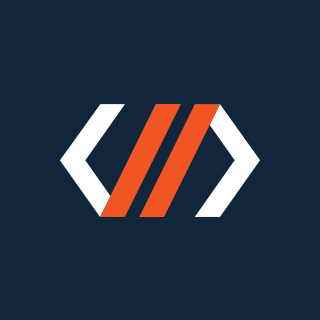MEAN stack is something that any software developer specializing in building dynamic web applications and websites must have heard of. It is a free and open-source JavaScript-driven software bundle that offers simple and readable solutions. This powerful combo simply helps provide a complete end-to-end system with vanilla JavaScript.
Since it was announced to the world in 2013, the MEAN tech stack is often mentioned alongside other software bundles, especially LAMP (Linux, Apache, MySQL, PHP/Perl/Python) – commonly regarded as the MEAN’s predecessor. It was the LAMP acronym’s creator who – back in 1998 – pointed out the fact that a software bundle consisting of FOSS (free and open-source software) components can possibly be „a feasible alternative to expensive commercial packages”.
And that’s what the MEAN stack is about but, of course, this major feature is just the starting point for what MEAN tech stack has to offer and there’s much more in store. However, some people already argue that the MEAN’s components „have failed to keep up with the times” and wonder what comes next...
However, here’s all you need to know about MEAN stack web development in 2022.
Table of contents:
1. MEAN tech stack in a nutshell
2. MEAN stack – software components
3. MEAN tech stack – common use cases
4. MEAN stack technologies – why it’s worth it
MEAN tech stack in a nutshell
MEAN is an acronym derived from the initial letters of technologies such as MongoDB, Express.js, AngularJS (or Angular), and Node.js. However, there are some variations available, with Angular (or AngularJS) replaced by React (MERN), or Vue.js (MEVN).
MEAN stack – the collection of JavaScript technologies – relies on the concept of the „JavaScript Everywhere” paradigm, just like its crucial component, the Node.js runtime environment. The bottom line is that everything within an application developed using MEAN stack – regarding both front end and back end – is written and run in a single programming language – JavaScript.
In other words, MEAN is a set of technology layers with an all-encompassing JavaScript, serving as a full-stack development language. And the latter is one of the core World Wide Web technologies, with as much as 97.9% of all the websites (including YouTube.com and Google.com) using it as a client-side programming language.
MEAN stack – software components
The MEAN stack architecture encompasses four key components:
- MongoDB – a database
- Express.js – a framework
- AngularJS – a front-end framework
- Node.js – a back-end solution
MongoDB – a database
This document-oriented, NoSQL schema-less database solution meant for high-volume data storage, is known for solving various data challenges, and making working with data smooth for any MEAN stack developer. They list scalability, flexibility, high availability, aggregation, simple query syntax, and high speed among MongoDB’s key features, with performing „100 times faster than other relational databases” topping the list.
Express.js – a framework
Express.js is a fast, flexible, minimalist, and lightweight JavaScript web application framework for Node.js or simply server-side JavaScript framework. It enables the creation of robust APIs as well as secure mobile applications, and single and multiple web pages.
AngularJS – a front-end framework
AngularJS – a JavaScript-based open-source structural web app framework used primarily for developing single-page applications and other front-end purposes. Importantly, it is no longer supported, although it still can be used under certain conditions. One of them is upgrading to Angular, the AngularJS’s successor.
Read our other comprehensive, in-depth articles on Angular if you want to know some exciting new features of Angular 12, or learn what excellent, eye-catching applications you can build with this platform.
Node.js – a back-end solution
Node.js’s presence on the list of MEAN’s components is one of the reasons why this stack is so fast, and time-efficient in building network apps. With event-driven architecture, it’s perfect for writing highly scalable applications (including real-time ones), and browser games, as well as web server-side scripting. By definition, Node.js, still loved and wanted by developers worldwide, is an open-source, cross-platform JavaScript runtime environment, running on the V8 engine.
And here are some more powerful insights – ins and outs of using Node.js as backend, top 5 types of Node.js apps you can build as well as reasons why using Node.js is truly beneficial, what are its limitations, and when it’s better NOT to use it.
MEAN tech stack – common use cases
MEAN stack application is a big subject due to this software stack’s versatility. A wide variety of web development, both front-end and back-end ones, are in the mix here, with a focus on creating fast, robust, GUI-focused web applications and websites.
This full-stack development toolkit can be used for developing a variety of apps, including real-time, enterprise, and business ones, as well as large-scale applications. Additionally, the MongoDB component is responsible for supporting use cases of transactional, search, analytics, and mobile nature.
The MEAN architecture may be something proper for tech-heavy businesses, including start-ups, as well as teams who only know JavaScript. A MEAN stack example may include many modern commercial products, like social media, chats, forums, and multimedia streaming.
MEAN stack technologies – why it’s worth it
There are many reasons why it may be a good idea to give the MEAN tech stack a try. If you need an efficient tool for building robust and maintainable websites or robust web applications, then choosing MEAN development may be a good option. MEAN runs fast on one hand, but is easy to use, and also reusable, on the other. And the products, like web applications, that are developed with it, not only are dynamic but also secure and reliable.
Valeri Karpov who coined the MEAN acronym, and announced it to the world in 2013, mentioned some major advantages of coding with Javascript throughout the whole project – the idea standing behind the MEAN development. Some of the benefits he listed include performance gains – regarding the developers’ productivity and software created, as well as smoother and easier debugging and database administration.
With MEAN at hand, the server-based code and database queries are easy to understand for those working on the client side. And this integrity is something that speeds up the backend development process and eliminates many uncertainties, even for people who had not cooperated together before, e.g. during hackathons. Thus, working within the MEAN stack makes the collaboration of team members easier, which accelerates the performance, and time to market, of particular solutions even more.
On top of that, the open-source nature of MEAN’s components makes the whole stack improved, updated, and revised regularly by active contributors from all over the world. Also, because JavaScript is an immensely popular programming language, it may not be that difficult to fill job vacancies for MEAN projects run and find talented MEAN stack developers.
And you, have you made use of the MEAN stack? Do you think it’s worth using nowadays? What limitations of its use can you spot? Is it still the right choice in the year 2022?

